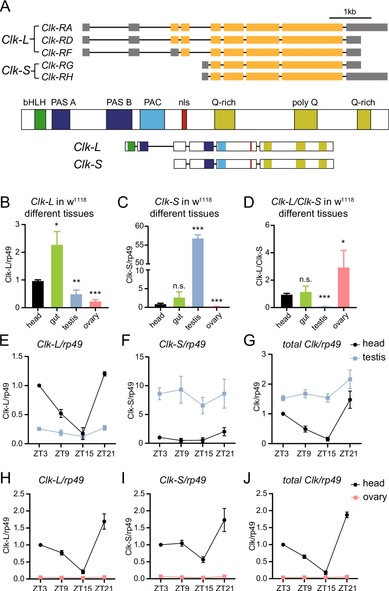https://doi.org/doi:10.1016/j.expneurol.2025.115557
https://pubmed.ncbi.nlm.nih.gov/41238153/
#Circadian
#Drosophila #Sleep

A pair of eye-antennal discs give rise to most tissues that comprise the adult head of the fruit fly, Drosophila melanogaster, including a pair of compound eyes and a trio of simple eyes called ocelli. These two visual organs are anatomically distinct, innervate different regions of the brain, and control some distinct visual and circadian behaviors. Several members of the retinal determination gene regulatory network are differentially expressed within the compound eyes and ocelli. We have manipulated the network as well as the transcriptional repressor Groucho (Gro) within the area of the eye-antennal disc that gives rise to the ocelli, interocellar head epidermis, and several classes of mechanosensory bristles. We observe several changes in tissue identity including a dramatic transformation of the ocelli into compound eyes. Our findings suggest that the modulation of transcription factor levels and/or activity is sufficient to induce the specification of distinct tissue fates. This could potentially give the same transcriptional networks the ability to generate an array of cell, tissue, and organ types.

Circadian rhythms, conserved across life, are governed by molecular feedback loops in Drosophila clock neurons, though how these loops adapt in peripheral tissue clocks remains unclear. In this study, we discovered that in reproductive tissues, the expression profile of Clock is notably different. It is expressed at very low levels in the ovary, while a shorter isoform of Clock is particularly abundant in the testis. Downregulation of these isoforms impaired fertility in both male and female flies. The short isoform of CLOCK inhibited the binding of the longer isoform to CYCLE, leading to a reduction in CLOCK / CYCLE co-binding in the testis. Using ChIP-seq to identify CLOCK and CYCLE binding sites in the head, ovary and testis, we found that the binding profile of CLOCK / CYCLE was distinct between these tissues, in which CLOCK / CYCLE targets to genes involve in spermatogenesis specifically in testes. Immunostaining revealed knock down of CLOCK short form results in defects in spermatogenesis. This study reveals the expression profiles and functional mechanisms of specific Clock isoforms in reproductive tissues, which highlighted the modification of clock regulatory loop and essential role of Clock in reproductive organs.
📢 Looking forward to my return visit to Norwich and the @earlhaminst, this time to give the Dame Janet Thornton lecture on Thursday 13th.
Register link (with reception afterwards 🍰, do come and say hello!):
➡️ https://www.earlham.ac.uk/events/dame-janet-thornton-annual-lecture-2025
As well as talking #circadian clocks in #plantsci 🌿 and a bit on #OpenData infrastructure 💽, I'm re-using the notion of Arrival from Katherine Trebeck and Jeremy Williams' book, the #Economics of Arrival. Might this help us researchers to bridge the Knowledge-Action Gap (see below) ?
Circadian clocks synchronise physiological and behavioural rhythms to environmental cycles such as light and temperature. In nature, temperature cycles lag light cycles, with the extent of lag varying seasonally. Thus, the extent of this delay is an essential aspect of seasonal cues. Yet, the combined effects of light and temperature cycles on circadian systems remain poorly understood. Using a series of environmental cycles with varying degrees of lag between temperature and light, we examined the response of circadian activity to complex environments and show that morning and evening activity exhibit differential temperature sensitivity in Drosophila melanogaster . We find that the expression of temperature-induced timeless splice variants is modulated by light cycles as well as the degree of lag between temperature and light. We also reveal rhythmic expression of the timeless splicing regulator Psi . Furthermore, we leveraged a laboratory-selection approach to reveal that the differential temperature sensitivity of morning and evening activity evolves upon selection. We observed selection-dependent differences in temporal expression of timeless splice variants thus linking circadian gene splicing to behavioural plasticity. Thus, our integrated behavioural, molecular, and evolutionary approach advances the understanding of how circadian systems integrate seasonal cues. ### Competing Interest Statement The authors have declared no competing interest.